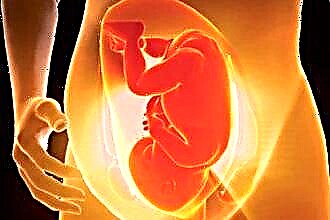Inflammation of adenoid vegetations (adenoiditis) is a common ENT disease that is most often diagnosed in children aged 3 to 12 years. Hypertrophy of the nasopharyngeal tonsil leads to a decrease in the reactivity of the body, as a result of which the risk of developing septic inflammation in the respiratory organs increases. Purulent adenoiditis in children occurs due to neutrophilic-macrophageal inflammation of hyperplastic lymphadenoid tissue, which consists of the nasopharyngeal tonsil. The clinical manifestations of the disease are determined by the degree of proliferation of adenoid vegetations, the immunological reactivity of the child's body and the tendency to allergic reactions. The greatest danger to the patient's health is a sluggish purulent inflammation of the adenoid tissues, which leads to intoxication of the body and systemic complications.
Etiopathogenesis
 What is the mechanism and causes of the development of adenoiditis in children? Inflammation of the hypertrophied pharyngeal tonsil occurs mainly in children before puberty. After 12 years, the immune organ almost completely atrophies, so adenoiditis is rarely diagnosed in adulthood.
What is the mechanism and causes of the development of adenoiditis in children? Inflammation of the hypertrophied pharyngeal tonsil occurs mainly in children before puberty. After 12 years, the immune organ almost completely atrophies, so adenoiditis is rarely diagnosed in adulthood.
The proliferation of the nasopharyngeal tonsil is most often associated with the lack of adaptive immunity in the child. Frequent relapses of respiratory diseases stimulate the activity of the immune organ, which can lead to the proliferation of lymphadenoid tissues that produce immunoglobulins. In other words, adenoiditis in a child appears against the background of a decrease in immunity, which is facilitated by:
- immunodeficiency states;
- constitutional features;
- abnormal structure of the nasal septum;
- childhood infections (scarlet fever, chickenpox, measles, flu);
- genetic predisposition (lymphatic diathesis);
- endocrine disorders (thyroid dysfunction);
- unbalanced nutrition (hypo- and avitaminosis);
- pathologies of pregnancy (viral diseases, fetal hypoxia, birth trauma);
- unfavorable ecological situation (dustiness and air pollution).
Inflammation of the hypertrophied tonsil often occurs due to allergic reactions that lead to a weakening of phagocytosis.
 Frequent relapses of infectious diseases create an excessive functional load on the lymphadenoid tissues. Over time, there are violations in the processes of regeneration and alteration of the tissues of the nasopharyngeal tonsil.
Frequent relapses of infectious diseases create an excessive functional load on the lymphadenoid tissues. Over time, there are violations in the processes of regeneration and alteration of the tissues of the nasopharyngeal tonsil.
The tension of the adaptive mechanisms caused by the imbalance of immunocompetent cells causes an increase in the number of reactive follicles. This leads to the proliferation of adenoid tissues and, as a result, hypertrophy of the immune organ.
Symptomatic picture
What symptoms indicate the development of adenoiditis in children? Infectious inflammation of adenoid vegetations most often occurs as a complication of inflammatory processes occurring in the laryngopharynx and paranasal sinuses. The development of ENT pathology is signaled by hyperthermia, fever and general signs of intoxication of the body.
Typical symptoms of the development of adenoiditis are:
- nasal congestion;
- mucous nasal discharge;
- Difficulty nasal breathing;
- sniffing in a dream;
- fever;
- temperature increase;
- periodic breath holding;
- unproductive cough;
- decrease in the timbre of the voice;
- illegibility of speech;
- muscle weakness;
- hearing loss;
- asthma attacks;
- loose stools;
- pain in the larynx, radiating to the ear.
Acute and chronic adenoiditis leads to the formation of abscesses in the pharynx, which is fraught with stenosis.
Inflammation of the adenoid vegetation leads to swelling of the mucous membranes and blockage of the nasal passages, as a result of which the child can breathe only through the mouth. Over time, constant breathing through the mouth leads to a smoothing of the nasolabial fold and deformation of the lower jaw. Untimely treatment of ENT disease entails the development of an "adenoid face", in which there is a violation of the bite and drooping of the lower jaw.
Local manifestations
If pathological symptoms appear, it is undesirable to postpone the visit to the pediatrician. When examining a patient, the doctor will be able to accurately determine the cause of the development of the pathology and determine the optimal drug treatment regimen. What local symptoms indicate the occurrence of foci of inflammation in the nasopharyngeal tonsil?
- hyperemia of the palatine arches;
- red bands on the walls of the oropharynx;
- inflammation of the glands in the soft palate (Geppert's symptom);
- an increase in the submandibular and cervical lymph nodes;
- swelling of the nasopharyngeal tonsil;
- purulent exudate on the surface of adenoid vegetations.
Important! Late treatment of adenoiditis leads to damage to the lacrimal canals and the development of dacryocystitis.
Blockage of the choans (nasal canals) leads to hypoxia, i.e. oxygen starvation, which can subsequently lead to the development of enuresis. Severe intoxication of the body and oxygen deficiency negatively affect the physiological and mental development of the child. Therefore, when the first signs of adenoiditis appear, it is necessary to undergo a hardware examination by an otolaryngologist.
Purulent inflammation
Distinguish between acute and chronic inflammation of the hypertrophied nasopharyngeal tonsil. Acute inflammation (retronasal angina) rarely causes systemic complications and therefore much easier  amenable to drug therapy. Purulent adenoiditis in children occurs due to the development of beta-hemolytic streptococcus, Staphylococcus aureus, Pseudomonas aeruginosa, etc.
amenable to drug therapy. Purulent adenoiditis in children occurs due to the development of beta-hemolytic streptococcus, Staphylococcus aureus, Pseudomonas aeruginosa, etc.
Bacterial inflammation of lymphoid tissues causes the formation of purulent foci in the nasopharyngeal tonsil and the development of infectious and allergic reactions. You can determine an ENT disease in a child by the following signs:
- shallow breathing;
- mucopurulent nasal discharge;
- subfebrile and febrile fever;
- drying out of the mucous membrane of the oropharynx;
- dry cough after sleep;
- frequent colds complicated by otitis media;
- lack of appetite;
- runoff of purulent secretions along the back of the pharynx.
The tonsils and walls of the throat are often involved in purulent inflammation of the pharyngeal tonsil, which entails the development of lacunar tonsillitis and bacterial pharyngitis. If the foci of inflammation are not stopped, this can lead to tissue abscess in the retropharyngeal and paratonsillar areas.
Treatment principles
It is possible to eliminate the symptoms of adenoiditis and alleviate the well-being of the child with the help of palliative and etiotropic drugs. It is possible to determine the optimal therapy regimen only after passing the necessary microbiological tests and examining the patient. For an accurate diagnosis, the specialist performs computed tomography of the nasal cavity, fibroscopy, posterior rhinoscopy and digital examination of the nasopharynx.
Depending on the causative agent of the infection and the stage of development of ENT pathology, the child is prescribed a course of drug treatment. To eliminate pathological flora and eliminate inflammation in adenoid vegetations, the following are used:
- antibiotics - destroy the membranes of bacterial cells, which helps to reduce the number of pathogens in the lesions;
- glucocorticosteroids - stop infectious and inflammatory reactions in lymphadenoid tissues;
- decongestants - help to narrow blood vessels and facilitate nasal breathing;
- antihistamines - accelerate the regression of allergic processes in the hypertrophied tonsil and mucous membranes of the nasopharynx;
- antipyretics - reduce fever and eliminate febrile conditions;
- mucolytics - reduce the viscosity of purulent exudate in the ENT organs and accelerate its excretion;
- analgesics - reduce the sensitivity of nociceptors, which helps to eliminate pain.
Important! To prevent relapses of septic inflammation, drugs with immunostimulating and immunomodulatory effects allow.
Restoration of the body's defenses can increase tissue reactivity and, accordingly, reduce the likelihood of re-development of purulent adenoiditis. To prevent inflammation, it is necessary to irrigate the nasopharynx with antiseptic solutions at the first signs of rhinitis or sinusitis.
Preventive actions
Prevention of inflammatory processes in the nasopharyngeal tonsil consists in regular examination of the patient by an otolaryngologist and timely treatment of infectious diseases. The proliferation of lymphadenoid tissue and its subsequent inflammation occurs against the background of immunodeficiency states. To prevent a decrease in the reactivity of the body, you can:
- regular walks in the fresh air;
- balanced and nutritious food;
- fortification and immunostimulating therapy;
- protection against local hypothermia and overheating of ENT organs;
- systematic lavage of the nasopharynx with medicinal decoctions;
- desensitizing therapy using antiallergic drugs.
Irritation of the mucous membranes of the respiratory system leads to a decrease in tissue reactivity and, as a result, an increase in the risk of developing respiratory diseases. Maintaining a normal microclimate in the house, moderate physical activity and a fortified diet can strengthen the child's immune system and thereby prevent the re-development of adenoiditis.



